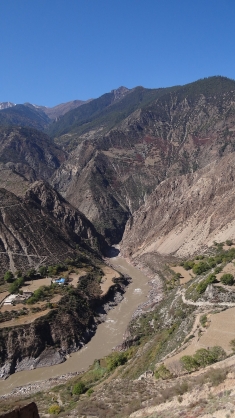China Should Set Good Example on the Mekong River
Originally published in The Economic Observer (a weekly Chinese newspaper)
What do Chinese think of when they hear “Mekong River?” I asked my friends and their answers pointed to the brutal killing of Chinese sailors in 2011 by drug kingpin Naw Kham, who was sentenced to death by a Chinese court.
For them, the Mekong River – known as Lancang Jiang (Turbulent River) in Chinese – appears to be an outlaw territory inhibited by pirates and drug kingpins.
But I probed further, asking about the dams that are planned in the upper reaches of the Mekong in Yunnan Province. ''It is small and not popular compared to the Yangtze and Yellow rivers,'' my friend said. She certainly knew about the notorious Three Gorges Dam, but admitted she didn’t know much about the controversial Mekong River dam projects.
The public has become more skeptical and resistant to dam construction in recent years, especially since the State Council admitted major geological, human and ecological problems resulting from the Three Gorges Dam. But even though the Mekong River originates in the Tibetan Plateau – just like the Yangtze and Yellow Rivers – the controversial dam projects there still aren’t on the radar for most Chinese.
In 1995, the Mekong River Commission (MRC) was established by Laos, Cambodia, Thailand and Vietnam to promote sustainable use of the river. China, along with Myanmar, is a “dialogue partner,” but not a member.
Indeed, China probably isn’t anxious to get too involved with the MRC. In 2002, China was blamed for damaging the Mekong's pristine ecology when it collaborated with Thailand to dynamite shoals, rapids and reefs in order to free up navigation routes for large cargo ships.
The move spurred more trade, but local villagers living along the river in Laos and Thailand complained about bank erosion, a dwindling fish population and loss of biodiversity.
Then, at an MRC meeting in Thailand two years ago, Chinese delegates became the target of ministers from Laos, Thailand, Vietnam and Cambodia, who blamed Chinese dams for causing downstream floods when they were opened and droughts when they were closed. China responded by sharing some data on water flow, but blamed the problems downstream on climate change.
Chinese delegates attending MRC's meeting in Laos earlier this month may have breathed a sigh of relief though when Laos and Thailand became the new targets of dam indignation. Laos, along with Thai investors, decided to go ahead with the $3.6 billion Xayaburi Dam despite warnings from conservationists and opposition from Vietnam and Cambodia. When it becomes operational in 2018, the Xayaburi will be the first dam on the lower Mekong.
China’s Mekong ambitions are also just getting started. According to data from the environmental group International Rivers, China plans to build at least 19 more dams on the Upper Mekong in addition to the seven that are already completed. And according to information from TERRA, a conservation group in Southeast Asia, Chinese companies are reportedly investing in as many as 10 dam projects in Laos, while in Cambodia, China Southern Power Grid (CSGP) might invest in the Sambor Dam to sell electricity to Thailand.
The future of the Mekong River is worrying. The Xayaburi Dam alone would curtail migration of up to 100 fish species and spell doom for the Mekong Giant Catfish. According to a technical review released in March 2011 by the MRC, the dam’s reservoir will silt up and prevent soil alluvial from running down to nourish farmland and major rice plantations in Vietnam.
Development of hydropower on the Mekong River is nothing new. As early as the 1970s, both the U.S. and Japan were trying to promote dam projects in the Mekong region through aid agencies like the World Bank and Asian Development Bank.
But with strong protests and anti-dam movements around the world, dam projects on the Mekong River were shelved until the end of last year when the Laotian government gave the nod to go ahead with the Xayaburi Dam.
The U.S. is still involved with the Mekong River, but now in a different role: conservationist. Secretary of State Hillary Clinton openly voiced concern about dam construction on the Mekong River during her visit late last year. Likewise, Japan has pledged to help affected countries study the environmental impacts of the planned hydropower projects.
China is a relative newcomer to the geopolitics of the Lower Mekong. While it may have so far dodged significant opposition to its own projects on the Upper Mekong, it can expect plenty of conservationists in Southeast Asia to protest its hydropower investments. In August last year, villagers in Thailand had already sued the Thai government and state enterprises to stop them from buying electricity generated from Mekong River dams.
China has a great opportunity to set a good example. In 2004, Premier Wen Jiabao made a significant move by shelving many dam projects so environmental impact studies could be conducted. The country can again gain a good reputation worldwide if the Chinese government and companies apply the same attitude with all dam investments.
Anchalee Kongrut is a journalist with the Bangkok Post on exchange with The Economic Observer.



